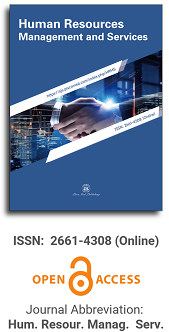Description
Human Resources Management and Services (HRMS) is an international open access journal on theoretical and practical research in the field of human resource management. HRMS adopts a double-blind peer review model and publishes high-quality articles. It is committed to disseminating unique and insightful insights and promoting the development, innovation and understanding of human resource management. Potential readers of HRMS include scholars, practice managers, and policy makers in the field.
HRMS welcomes articles based on original research, reviews, case reports, perspectives, etc. HRMS also publishes editorials reflecting the official opinions of the journal's editorial office. Submissions to HRMS can be interdisciplinary around the topic of human resource management. Examples of some related topics are as follows:
- Human resource planning;
- Human resource services;
- Organizational management;
- Human capital;
- Training and development;
- Sustainable human resource practices;
- Employee efficiency and performance management;
- Labor relations;
- Employee well-being;
- Policy formulation;
- Job satisfaction;
- Psychological issues;
- Social issues;
- Fairness in employment.



